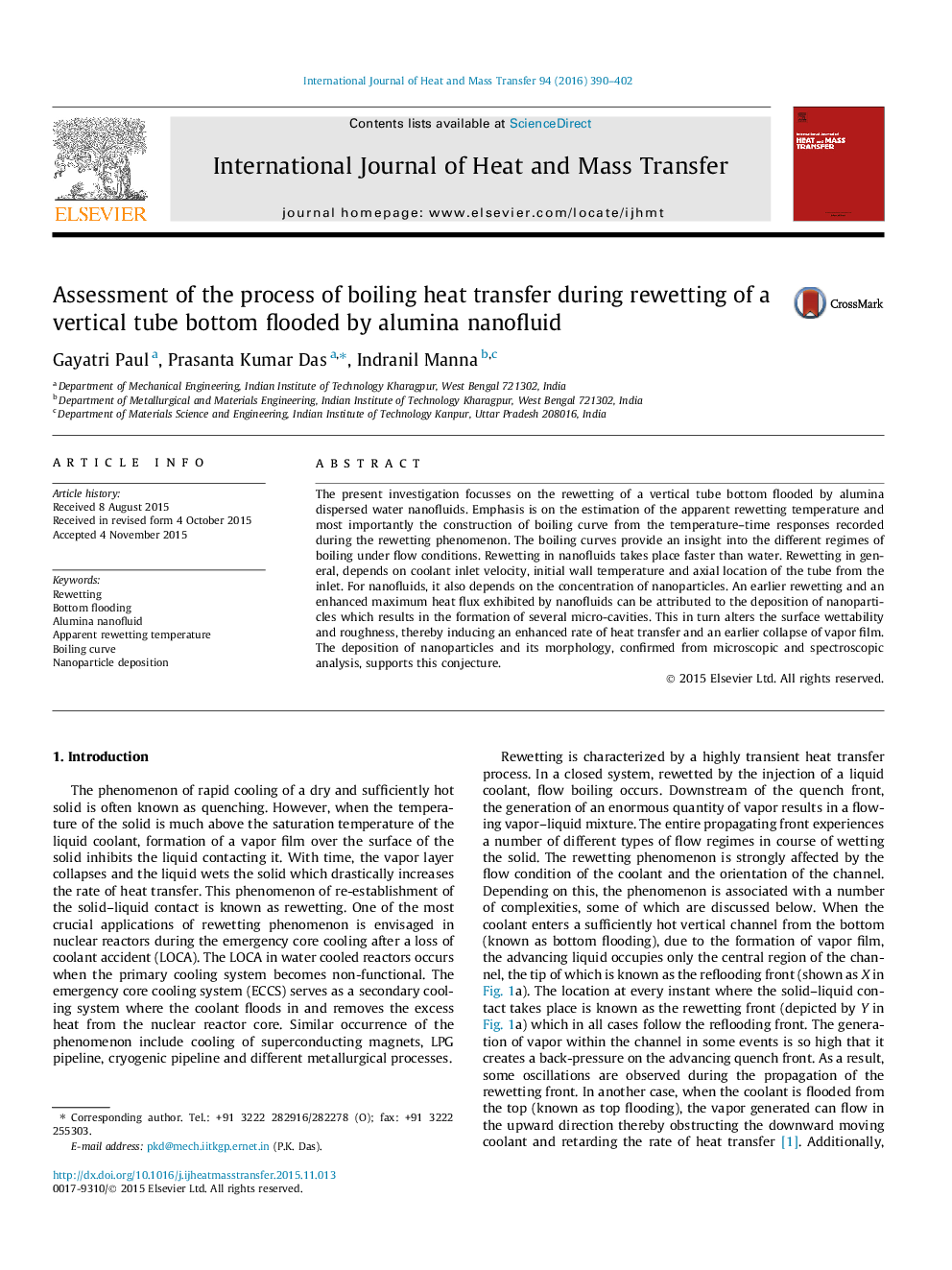| Article ID | Journal | Published Year | Pages | File Type |
|---|---|---|---|---|
| 7055999 | International Journal of Heat and Mass Transfer | 2016 | 13 Pages |
Abstract
The present investigation focusses on the rewetting of a vertical tube bottom flooded by alumina dispersed water nanofluids. Emphasis is on the estimation of the apparent rewetting temperature and most importantly the construction of boiling curve from the temperature-time responses recorded during the rewetting phenomenon. The boiling curves provide an insight into the different regimes of boiling under flow conditions. Rewetting in nanofluids takes place faster than water. Rewetting in general, depends on coolant inlet velocity, initial wall temperature and axial location of the tube from the inlet. For nanofluids, it also depends on the concentration of nanoparticles. An earlier rewetting and an enhanced maximum heat flux exhibited by nanofluids can be attributed to the deposition of nanoparticles which results in the formation of several micro-cavities. This in turn alters the surface wettability and roughness, thereby inducing an enhanced rate of heat transfer and an earlier collapse of vapor film. The deposition of nanoparticles and its morphology, confirmed from microscopic and spectroscopic analysis, supports this conjecture.
Related Topics
Physical Sciences and Engineering
Chemical Engineering
Fluid Flow and Transfer Processes
Authors
Gayatri Paul, Prasanta Kumar Das, Indranil Manna,
